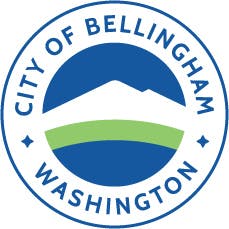Outdoor Dining Structures - Streateries and Parklets
Consultation has concluded

>>Find the latest information about City of Bellingham streateries at cob.org/outdoor-dining-structures-streateries-and-parklets
Streatery Assessment and Report Released (July 2023)
The Planning and Community Development Department has completed an assessment of the City’s streatery program, which allows restaurants to use the right-of-way for outdoor dining. The program was established before the COVID-19 pandemic to promote vibrant street life, prioritize pedestrian use, and support local businesses. Due to pandemic-related restaurant closures, more streateries were allowed to be constructed, and additional measures like overhead coverings and heating elements were permitted to support outdoor dining during winter. Between March 2020 and December 2022, around 30 streateries were permitted, mostly in the downtown district.
Before constructing a streatery, businesses must obtain a permit from the Public Works Department. The permitting process involves assessing traffic impacts, accessibility, and safety. Streateries with overhead coverings require additional building permits. The initial permit fee ranges from $150 to $350, with an annual renewal fee of $50.
In the fall of 2022, City staff collaborated with students from WWU's College of the Environment to assess the streatery program, considering existing conditions, public opinion, design, fees, and safety. The assessment included a visual survey of streateries, an online public opinion survey, and interviews with business owners. These findings were reviewed by City staff and committees of the Downtown Bellingham Partnership.
Based on the assessment, the report provides recommendations in various areas:
1. Design: Establish design guidelines, including ADA accessibility standards, open structure requirements, landscaping, and material recommendations.
2. Fees: Maintain current application fees but adopt an annual renewal fee based on 8% of square footage times average appraised land value plus Leasehold Excise Tax (~ $1,680/year per streatery, depending on size).
3. Safety: Implement safety measures such as proper spacing, accessibility, fire safety, visibility, and maintenance requirements.
The recommendations aim to improve the program's fairness and functionality while continuing to support active street uses.
The next steps involve seeking public input on the recommendations and providing an update to City Council. Once the new guidelines are adopted, existing permit holders will be notified and will have a year before the next annual renewal period to either bring their structure into compliance or determine that the structure should be removed.

Have a question about "streateries" or "parklets"? Just ask!
Your question will be answered and posted here.


